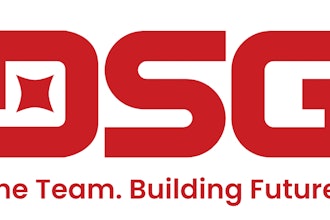Your competition offers a deal so enticing that the customer finds it tough to refuse. A loss-leader does not have to end up as a lost sale for you. The problem is that salespeople struggle to respond and want to match the competitor’s deal. These ideas will help you formulate a response.
Change your optics. View this deal from the competitor’s perspective. Why would that competitor choose to do this? Companies use loss-leaders to buy business. It is a form of penetration pricing — buy share and make it up some other way. The competitor may not see any other way to differentiate than to offer a cheaper price. In a sense, the competitor admits to a lack of imagination and innovation. Cheap prices are not innovative. Maybe the competitor is desperate for business. Do you want to mask their desperation by matching their pricing? No. You must shine a spotlight on this desperation.
When the customer responds to this overture, it is a purely emotional reaction. They are reacting to a deal. Deals trigger chemical reactions in the brain that reason cannot override. The point is that you cannot win a rational argument with an emotional buyer. You must fight fire with fire — in this case, emotion. Use the benign introduction of fear to stir the buyer’s concerns about this deal. Ask questions that may cause the buyer to re-think the offer: Aren’t you curious about this offer? Are you concerned that they want to offer this option so cheaply? Why do you think they are doing this? If they are giving this away for this price, where do you think they are making it up? Be careful, though. You do not want to put the buyer in a position that he or she feels the need to defend the desperate competitor.
Is this offer the real deal? Is the competition offering real value or faux value? It could be that the offer is really smoke and mirrors and of no real practical benefit to the customer. It just sounds good. This is the argument many customers will use for extended warranties. They respond, “If I didn’t think the product was any good to begin with, I wouldn’t buy it from the start. Why would I bet that it will break?” Faux value is perceived value that rarely matters. The intensity with which retailers press extended warranty signals to the buyer that it is more of a profit center than cost center for the retailer.
Oftentimes, with an objection like this, it is useful to re-frame it as another product feature and build a response based on that. For example, what if the color of your product (not really that important in the operational sense) is different than what the customer wants? You would probably argue that your alternative features and benefits overshadow this. How do your alternative features and benefits overshadow the loss-leader? In the process of using this analogy, ask the customer if that loss-leader is mission-critical.
Value-subtraction or substitution is a viable response to loss-leaders. Explain to the buyer that you too could offer loss-leader pricing if you were to trim your value in other areas. When you present this rebuttal, refer to those areas of value that appeal to this buyer. It demonstrates that to lower your price, you must reduce your value. This plants a seed of doubt in the buyer’s mind that the competitor must be cutting back somewhere else.
Major discount stores notoriously select high-visibility items to price as loss-leaders. These retailers offer over 100,000 SKUs and target 100 or so commodity items to draw people into their stores. The theory is that people will buy other, more profitable items while they are there. It generally works or they would not continue to do it. Most savvy buyers know this. Your customers know this. This raises doubt in the buyer’s mind that the competitor’s overall value is as good as the promise of the loss-leader. This is where reason begins to temper emotion.
Modeling the behavior of a competitor is not a viable response. It is too ‘me-too.’ It adds to the sameness phenomenon that confuses customers. It demonstrates a lack of creativity or marketing laziness. If the competitor chooses to offer a cheap price to stir the passions of the buyer, respond. Do not respond with your own version of a cheap price. Respond with creativity and initiative. If the competitor has admitted that they cannot compete on any other playing field than price, this may be the most important admission they can make to the market. Use it to your advantage.
Tom Reilly is literally the guy who wrote the book on Value-Added Selling. You may visit him online at www.TomReillyTraining.com.























